Posted by Elena del Valle on October 29, 2010
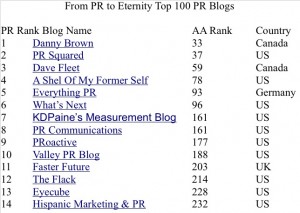
HispanicMPR.com listed in fourteenth place of Top 100 PR Blogs at From PR to Eternity (http://www.fpte.co.uk/2010/01/12/worlds-top-100-pr-blogs-january-2010/), Matthew Watson’s blog.
Watson explains that “The list is by no means perfect since it only features blogs on the AdAge Power 150 with PR, Public Relations, Publicity or Flack in the title, and a few others that have been suggested to me by commenter’s. Although it’s just a bit of fun I think it’s still a fairly decent indicator of the world’s top PR blogs.”
A senior account executive at Speed Communications, Watson writes about online marketing and public relations. A while back he compiled a list of what he thought were the top public relations blogs listed on the AdAge Power 150. The list is, according to his site, still one of the most popular pages on his site.
Posted by Elena del Valle on October 29, 2010
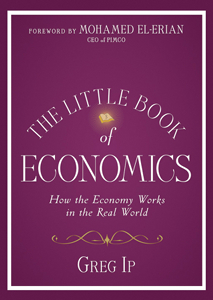
The Little Book of Economics book cover
Photos: Walek & Associates
With so much emphasis on the recession and how the economy in the United States and Europe is suffering few people, perhaps, stop to think about the basic term behind the discussion, the economy, and what it means to people’s everyday lives. Why are so many world economies struggling? How do the issues that drive our economy relate to the way we live our lives and make our living?
The answers often seem complex and out of reach of the average person. Among the many experts and lay people seeking to understand the current situation and what led to it is an editor who for years has made a living examining economic issues. Greg Ip, editor, United States Economics for The Economist magazine set an ambitious task for himself: to outline the basics of how the economy works in life in an easy to read style. In The Little Book of Economics How the Economy Works in the Real World (Wiley, $19.95) published this year he outlines his theories of how the economy works beyond academic theories.
In the 250-page hardcover book published this year, Ip covers economic terminology, myths, misinformation and its sources, inflation, globalization, the Federal Reserve, the Treasury and Congress, the roots of the current situation, government debt issues and possible consequences, sluggish growth and long term unemployment using case studies to illustrate the issues along the way. At the end of every chapter he included a Bottom Line section with a short bullet point summary of the most important points in the chapter.

Author Greg Ip
According to Ip recessions and bubbles are part of the natural cycle of a country’s economy. In the first chapter, he theorizes that if the financial system can sort out the bad debt issues resulting from the real estate bubble bursting, investment should return bringing an annual productivity growth of 1.5 percent or even 2 percent. If the labor force grows .75 percent there could be long term growth of between 2.25 percent and 2.75 percent, returning the United States to solid economic ground. In his words, the country “… may no longer be a glamorous growth stock; but it’s still a blue chip.”
The book is divided into 15 chapters: The Secrets of Success; Economic Bungee Jumping; In-Flight Monitor; Labor Pains; Fire and Ice; Drop the Puck!; All the World’s an ATM; All the President’s Men; The Buck Starts Here; White Smoke Over the Washington Mall; When the World Needs a Fireman; The Elephant in the Economy; Good Debt, Bad Debt; Love-Hate Relationship; and A Species of Neuralgia.
Ip learned about economics from his mother as a child and went on to study the subject as a university student. A former reporter at The Wall Street Journal from 1996 to 2008 he was named Business Journalist of the Year by the World Leadership Forum, received the William Brewster Styles Award in business and economics writing, and was on the 2002 The Wall Street Journal team honored with the Pulitzer Prize for breaking news reporting.
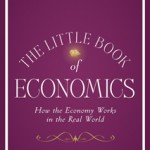
Click here to buy The Little Book of Economics
Comments:
Filed Under: Books
Posted by Elena del Valle on October 27, 2010
How Issues Management and Professional Expertise Can Work for Your PR
By Ronn Torossian
President and CEO, 5WPR

Ronn Torossian, president and CEO, 5WPR
Photo: 5WPR
Yesterday we were informed that the banking industry has regained profits, bringing it close to its pre-crisis levels. An analysis of the industry’s rebound revealed that the bigger lenders that assisted the still-struggling public performed better than those institutions that kept funds to themselves. With that in mind, I am well aware of the substantial role PR played in helping large banks – some of whom we envied for their success – reach this point.
But, this was not a PR tactic that started over night. Analysis and insight show that financial institutions have begun to seriously adopt ‘issues management’ as an effective and required tool that allows companies to reposition their brand in the new business environment. This rebound did not happen merely by chance, but with the help of PR and repositioning their company in a positive light.
Click here to read the entire article PR No Longer a Dirty Word in Corporate Lexicon
Posted by Elena del Valle on October 25, 2010

Click to enlarge
Photos: United States Marine Corps
Last month, the United States Marine Corps ( (USMC) launched Family Values, its first Hispanic Heritage Month promotional campaign consisting of snippets of testimonials and profiles of American citizens with backgrounds from Mexico and Puerto Rico. The idea behind it was “to celebrate the strong positive ideals shared by Hispanic Americans and the Marine Corps” through the personal testimonials of Latino men and women currently serving in the Marine Corps.
According to Wikipedia Hispanics account for 18 percent of enlisted Marines today. The site indicates 13 Hispanic Marines, such as France Silva and Guy Gabaldon (see WWII hero to be recognized in documentary to be released April 8), have received the Medal of Honor. A 2004 report, Recruiting Hispanics: The Marine Corps Experience Final Report by Anita U. Hattiangadi, Gary Lee, and Aline O. Quester of the Center for Naval Analyses, the Marine Corps has been very successful recruiting Hispanics.
The Family Values multimedia campaign had print and radio public service announcement extensions and was scheduled to appear on YouTube and Facebook. It included banners and Web page takeovers on ESPN.com, MLB.com, NFL.com and MySpace.com from September 15, 2010 through October 15, 2010. Scroll down to watch a video clip of the Family Values campaign.

Captain Hernandez
“The ideals of honor, courage and commitment are not exclusive to the Marine Corps,” said Lieutenant Colonel Darrin Kazlauskas, assistant chief of staff for advertising, Marine Corps Recruiting Command. “Hispanic American families, like all great families, instill these values so that each generation can move forward and become positive members of their communities. We are proud to serve with all our Marine brothers and sisters who hold these values in high esteem.”
Through Family Values the Marine Corps set out to offer the public a window into the personal lives of the Hispanic Marines profiled in the ads with the intent of leading the audience to believe that there are ways in which the fundamental values of Hispanic Americans and the Marine Corps are one.


Gunny Sergeant Acero and Major Cortes
The concept development of the campaign, created jointly by the United States Marine Corps and UniWorld Group, commenced in April of this year. A spokesperson declined to identify a target profile or share details regarding the human or budget resources assigned to the project.
“We have seen traction of the media materials, especially the video content on key websites such as YouTube. Our Facebook threads have also generated positive comments from our fans and followers. We have been pleased with the campaign and believe that it is working to create a positive public dialogue about the supreme ‘call to service’ and the individuals who accept that call,” said a campaign representative by email in response to a question about campaign measurement efforts.
The Marine Corps executes a Black History Month campaign annually. This year’s BHM campaign was entitled, The Line, and traced the history of African Americans within the Marine Corps. The visual mechanism used in The Line was the blood-stripe or red piping located on Marine uniforms. That campaign included a TV spot, print ads, banner ads, a radio spot and a dedicated website.
Comments:
Filed Under: Video
Posted by Elena del Valle on October 22, 2010

Tinker Bell and the Great Fairy Rescue Blu-ray/DVD Combo Pack cover
Photos: Walt Disney Studios Home Entertainment
Early this year Walt Disney Studios released Tinker Bell and the Great Fairy Rescue, a 77-minute animated film in English, Spanish and French. The original movie was released in late September 2010 in a blu-ray and DVD combo pack. The Spanish version of the film is narrated by Mexican telenovela actress Dominika Paleta. Additionally, Mexican actress and singer Iran Castillo recorded songs for the film. Scroll down to watch video clips in English and Spanish of Tinker Bell and the Great Fairy Rescue.
Tinker Bell and the Great Fairy Rescue is about the famous fairy’s first encounter with a human, a little girl in the English countryside. The story takes place while Lizzy and her father, an academic type, are in the country. The young girl is a fan of fairies and of course her father discounts them as the subject of fiction. After a slightly bumpy first meeting Lizzy and Tink, as she is called by her friends, develop a special bond. A misunderstanding leads her friends to believe the blond fairy is in danger and they mount a rescue in the midst of a summer shower, a difficult time for fairies because when their wings get wet they cannot fly. After a few adventures all ends well.

Dominika Paleta
Dominika Paleta Paciorek de Ibarra (born October 23, 1972, in Kraków, Poland) is a Polish-Mexican actress. She is the daughter of a Polish violinist Zbigniew Paleta and art teacher Barbara Paciorek Paleta, and the sister of actress Ludwika Paleta.
Dominika has starred in several telenovelas (Spanish language serialized programs) including La Usurpadora, El Alma Herida, Por Un Beso, La Intrusa, Los Plateados and Mañana es para siempre. The actress, who studied art history at the Universidad Iberoamericana de México, and is fluent in Spanish, English and Polish. She is married to actor Fabián Ibarra and has two daughters, Maria and Altana.
Produced by DisneyToon Studios the film is priced at $29.99 DVD and $39.99 for the Blu-ray Combo Pack. The Disney Fairies franchise was built around the popularity of Tinker Bell. Disney also introduced Tinker Bell’s fairy friends Fawn, Iridessa, Rosetta and Silvermist. The billion dollar franchise boasts a thriving publishing and lifestyle merchandising program.
To date, over 675 Disney Fairies and Tinker Bell titles have been published in 57 countries and 31 languages, selling nearly 30 million copies; Disney Fairies magazines have sold over 7.5 million copies in 28 countries and an array of products from apparel and toys to electronics, home décor and stationery across the globe.
The website, DisneyFairies.com, is available in more than 20 territories across North America, Latin America, and Asia Pacific. Following the success of Walt Disney Pictures Tinker Bell on Disney Blu-ray and hi-def DVD, Disney released Tinker Bell and the Lost Treasure in 2009 as the second title in the series.
Posted by Elena del Valle on October 20, 2010
Assistant Brand Manager- Victoria/Negra Modelo Beer
Company Name: Crown Imports LLC
Position Title: Assistant Brand Manager-Victoria/Negra Modelo
Location: Chicago, Il 60603
Reports to Director of Hispanic Marketing. This person is responsible for assisting in delivering specified business targets (volume, profit, and share) through the development and execution of all brand strategies and plans. The right candidate must have Hispanic branding experience within a CPG firm. To learn more and/or apply, please follow the link:
http://tbe.taleo.net/NA5/ats/careers/requisition.jsp?org=BARTONBRANDS&cws=7&rid=762
Posted by Elena del Valle on October 20, 2010
and what you need to know before hiring your next one
By Art Montes De Oca
Owner, Montes De Oca Photography

Photographer Art Montes De Oca
Photo: Montes De Oca Photography
How do I know?
My first language is Spanish. My second is photography. Over the decades my career has spanned, I’ve photographed many award winning ads, brochures, and annual reports. Along the way I’ve learned a thing or two, and I’d like to share with you some of the secrets that every good photographer knows. These insights should end up saving you time and money in your marketing and advertising budget.
What do I know?
From the camera of a good photographer, it a rich medium filled with nuance, symbolism, and abstract concepts that can deliver a variety of meaningful messages. A good photographer uses the subject matter to convey a larger message to the viewer and to the marketplace.
Photography is not a universal language. The same picture can mean different things to different people. For instance, shooting for the Hispanic consumer marketplace means more than styling a photo with primary rather than tertiary colors. If your photographer doesn’t understand this, you have the wrong photographer. You need someone who didn’t learn Spanish in high school. Your photographer needs to know the difference between pan dulce and a donut.
Click here to read the entire article What Every Photographer Knows
Posted by Elena del Valle on October 18, 2010
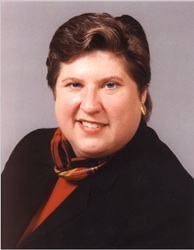
Julie Weeks, president and chief executive officer, Womenable
Photo: Womenable
A podcast interview with Julie Weeks, president and chief executive officer, Womenable is available in the Podcast Section of Hispanic Marketing & Public Relations, HispanicMPR.com. During the podcast, Julie discusses how Hispanic businesses are finding success in government contracting with Elena del Valle, host of the HispanicMPR.com podcast.
In her role as president and CEO of a research, program and policy development consultancy that seeks to enable women’s entrepreneurship worldwide Julie focuses her attention on women’s entrepreneurship in the private and public sectors in research, public policy and program management. She has nearly 30 years experience in research, public policy, and communications.
For three years, she served as executive director of the National Women’s Business Council, a federally-funded bipartisan policy advisory body created by the U.S. Congress to serve as an independent voice of women’s entrepreneurship and an advisor to the President, U.S. Congress and the U.S. Small Business Administration on women’s entrepreneurship issues. Prior to that position, Julie spent nine years as the director of Research and managing director of the Center for Women’s Business Research, a nonprofit organization that conducts research among women business owners and their enterprises. She also served as deputy chief counsel for Statistics and Research at the U.S. Small Business Administration, and vice president for Research and Public Policy at two market research firms.
She serves on the board of International Council for Small Business, serves on the national board of the National Association of Women Business Owners, co-chairs the Public Policy Council of the Association of Women’s Business Centers, and is on the advisory board of Enterprising Women magazine.
Julie received a masters degree from the University of Michigan. She serves on the board of International Council for Small Business, on the national board of the National Association of Women Business Owners, co-chairs the Public Policy Council of the Association of Women’s Business Centers, and is on the advisory board of Enterprising Women magazine.
To listen to the interview, scroll down until you see “Podcast” on the right hand side, then select “HMPR Julie Weeks” click on the play button below or download the MP3 file to your iPod or MP3 player to listen on the go, in your car or at home. To download it, click on the arrow of the recording you wish to copy and save it to disk. The podcast will remain listed in the October 2010 section of the podcast archive.
Posted by Elena del Valle on October 15, 2010

Unequal Fortunes book cover
Photo Arthur Levine: Emile Wamsteker
Arthur Levine has a post doctorate degree and heads the Woodrow Wilson National Fellowship Foundation. Forty years ago he grew up in the Bronx in New York City. In Unequal Fortunes Snapshots from the South Bronx (Teachers College Press, $24.95) Levine and Laura Scheiber, his research assistant, set out to look at the obstacles and opportunities for young people in tough neighborhoods like the South Bronx. In the 170-page softcover book published this summer they discuss the role of drugs, crime, violence and poor schools in the former educator’s neighborhood.
As part of the decade long project they revisited the South Bronx and compared his life in the 1960s with that of a group of Latino teenagers in the same neighborhood today. Among the questions they pondered are whether low income urban schools are as bad as some think; what life is like for disadvantaged children growing up in low income neighborhoods; and why people living on the same block 40 years apart have such unequal chances in life. The book is divided into three main sections: Arthur’s Story, Leo’s Story and What Changed?
Leonel Disla, one of the young men in the group they examined, died a violent death at the hands of the police. The authors examine what happened to the young man and explore the ways in which today’s society may have failed him. As part of their process they share information with readers about the youth’s family and friends as well as what they believe were his hopes and fears. Along the way they look at the devastating effects of poverty and racism like low-wage, dead-end jobs, inadequate housing, high crime rates, substandard schools, violence, drugs, a broken legal system, prison, and funerals of the underaged.
In Unequal Fortunes, the authors explore what they believe is the role of communities in shaping the destiny of young people and what they think could be done to ensure that more young people from low-income, high-crime communities can succeed in school, college, and life. At the same time, they struggle to explain why the lives of the two people were so dramatically different.
According to the book’s Prologue, the authors believe over time the prospect of the American Dream has diminished for many, especially the poor. They are convinced that although education is the best way out of poverty in America today youth in impoverished neighborhoods must overcome many difficult barriers on their way to reaching the American Dream.
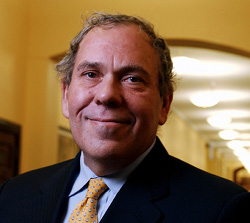
Author Arthur Levine, Ph.D.
Levine is president emeritus of Teachers College, Columbia University. He also previously served as a faculty member and chair of the Institute for Educational Management at the Harvard Graduate School of Education (1989-1994), president of Bradford College (1982-89), and senior fellow at the Carnegie Foundation for the Advancement of Teaching and Carnegie Council on Policy Studies in Higher Education (1975-82). Scheiber is a Ph.D. candidate in Comparative and International Education at Teachers College, Columbia University

Click here to buy Unequal Fortunes
Comments:
Filed Under: Books
Posted by Elena del Valle on October 13, 2010
By Romano Richetta
Senior Vice President, Participant Services, TIAA-CREF
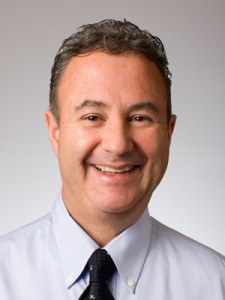
Romano Richetta, senior vice president, Participant Services, TIAA-CREF
Photo: TIAA-CREF
Baby Boomers, move over! Within the next 40 to 50 years, a very large number of Americans entering retirement will be Hispanic.1
Hispanics are younger than the general U.S. population; today less than 6 percent of U.S. Latinos are in retirement age less than half the percentage for non-Hispanic whites.2
Unfortunately, many Hispanics will not be prepared financially for retirement.
An October 2009 report of the Hispanic Institute and the Americans for Secure Retirement coalition found that only 25 percent of Hispanics are covered by employer-sponsored retirement plans, compared to 42 percent of non-Hispanic whites and 40 percent of African-Americans. When they reach retirement age, Hispanics often find that their savings do not stretch far enough; on average, Hispanics spend more than half of their retirement income (54 percent) on food and housing, while non-Hispanic white retirees spend just 11.4 percent of retirement income on these items, the report states.
Click here to read the entire article Making Retirement Planning Household Words for U.S. Hispanics, Latinos


























